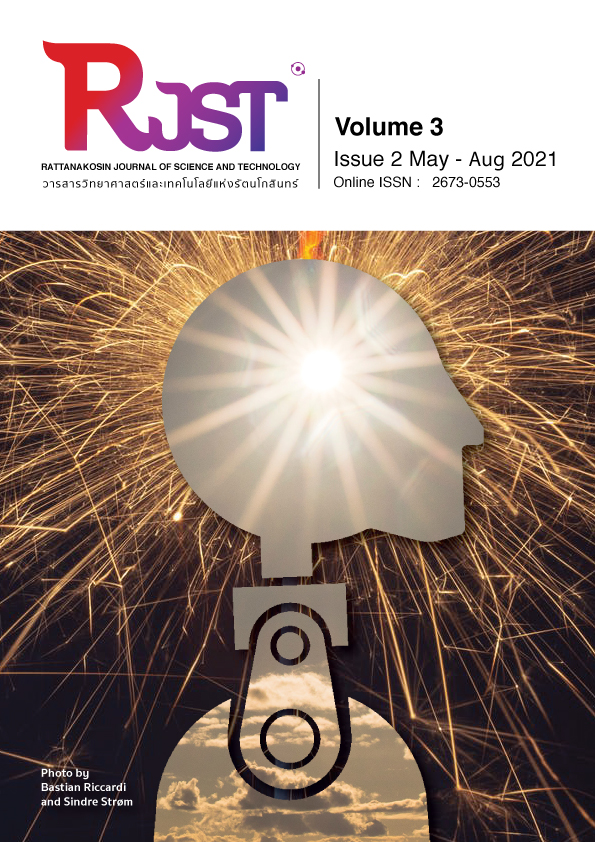Environmental and Structural Assessment for Port Improvements
Main Article Content
Abstract
This paper presents a guideline for the EIA and the inspection of berthing structures for port renovations. Environmental considerations include 1. Change of environment around the project Topography Low height plus the length of coastline, Changes in marine ecology, Dredging of a channel that changes the direction and speed of the water currents. 2. Change of type: The size and volume of ships entering and departing at the jetty that affect coastal erosion and seawater quality Transportation 3. Community attitude and acceptance: The level of interference affected by pollution. 4. Environmental quality measurement data such as air quality, noise level, seawater quality, and ecology includes the area of a chemical or fuel storage tank and a safety control system. The evaluation and verification of long-lived berth structures can have a material degradation effect. Thus, structural inspection is required using nondestructive and semi-destructive testing methods. Evaluation and inspection of long-lived berth structures can have a material degradation effect. Thus, structural inspection is required using nondestructive and semi-destructive testing methods. Together with the physical data of the structure, both in terms of material properties Details in engineering and geotechnical engineering, Ship data, Hydrographic data, wind speed data, bollard, fender data. The data were further analyzed to assess the stability of the port structure. The study found that Environmental and structural impact assessments prior to port renovations will ensure a safe and sustainable coexistence with the community.
Article Details
The content within the published articles, including images and tables, is copyrighted by Rajamangala University of Technology Rattanakosin. Any use of the article's content, text, ideas, images, or tables for commercial purposes in various formats requires permission from the journal's editorial board.
Rajamangala University of Technology Rattanakosin permits the use and dissemination of article files under the condition that proper attribution to the journal is provided and the content is not used for commercial purposes.
The opinions and views expressed in the articles are solely those of the respective authors and are not associated with Rajamangala University of Technology Rattanakosin or other faculty members in the university. The authors bear full responsibility for the content of their articles, including any errors, and are responsible for the content and editorial review. The editorial board is not responsible for the content or views expressed in the articles.
References
[2] วิเชียร ชำลี. (2552). เอกสารประกอบการสอนความคงทนคอนกรีต. ภาควิชาวิศวกรรมโยธา คณะวิศวกรรมศาสตร์ มหาวิทยาลัยบูรพา.
[3] ศูนย์วิชาการคอนกรีตซีแพค (CPAC Academy), (2002). หนังสือวิชาการของซีแพค “คอนกรีต เทคโนโลยี (Concrete Technology)”
[4] ทวีชัย สำราญวานิช, (2552). รายงานวิจัยฉบับสมบูรณ์ โครงการวิจัย การทำนายการแทรกซึมของ คลอไรด์ในคอนกรีตที่อยู่ภายใต้สิ่งแวดล้อมคลอไรด์, ภาควิชาวิศวกรรมโยธา คณะวิศวกรรมศาสตร์ มหาวิทยาลัยบูรพา.
[5] ASTM C42/C42M-03 (2003), Standard Test Method for Obtaining and Testing Drilled Cores and Sawed Beams of Concrete. Annual Book of ASTM Standards, West Conshohocken, PA, American Society for Testing and Materials.
[6] ASTM C805-02 (2003), Standard Test Method for Rebound Number of Hardened Concrete. Annual Book of ASTM Standards, Vol.04.02, ASTM, West Conshohocken, PA.
[7] ASTM C597 (2003), Standard Test Method for Pulse Velocity through Concrete. Annual Book of ASTM Standards, Vol.04.02, ASTM, West Conshohocken, PA.
[8] ASTM D6432 (2003), Standard Guide for Using the Surface Ground Penetrating Radar Method for Subsurface Investigation, Annual Book of ASTM Standards, ASTM, West Conshohocken, PA, American Society for Testing and Materials.
[9] ASTM A956-12 (2003), Standard Test Method for Leeb Hardness Testing of Steel Products. Annual Book of ASTM Standards, Vol.01.05, ASTM, West Conshohocken, PA.
[10] ASTM C876 (2003), Standard Test Method for Half–Cell Potentials of Uncoated Reinforcing Steel in Concrete. Annual Book of ASTM Standards, Vol.03.02, ASTM, West Conshohocken, PA.
[11] ASTM A751 (2007), Standard Test Method, Practices, and Terminology for Chemical Analysis of Steel Products. Annual Book of ASTM Standards, Vol.03.02, ASTM, West Conshohocken, PA.


